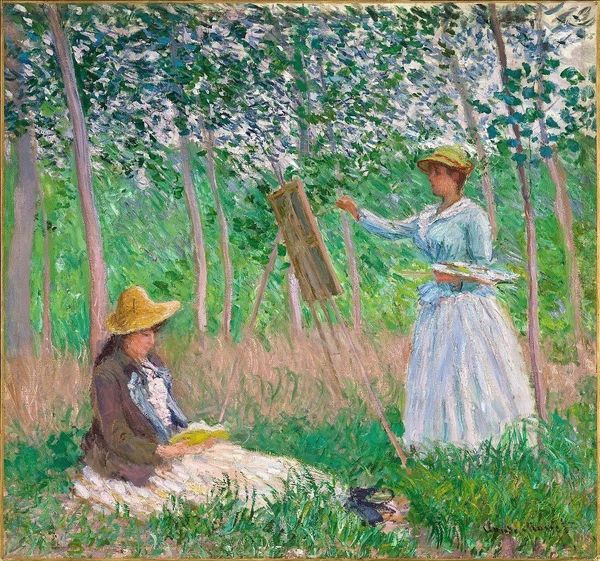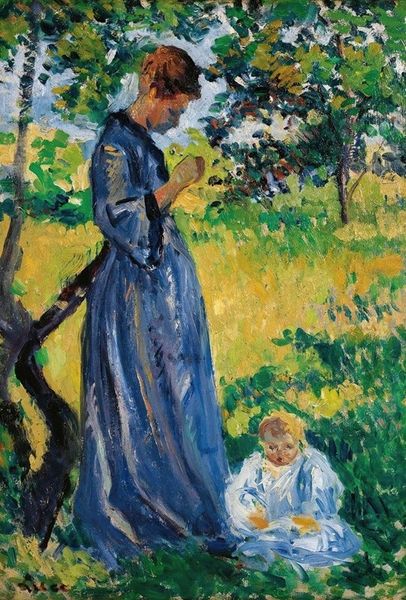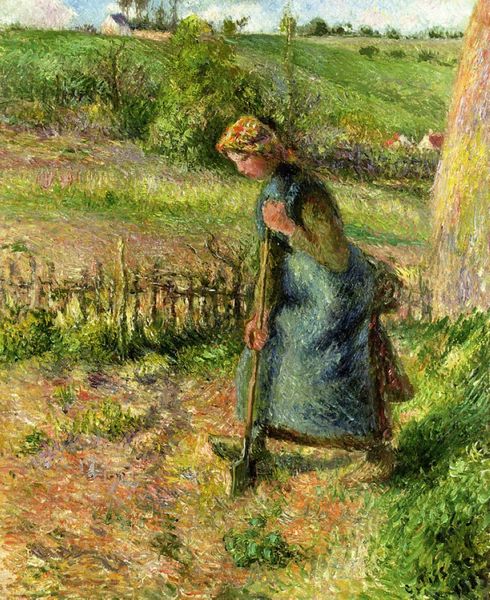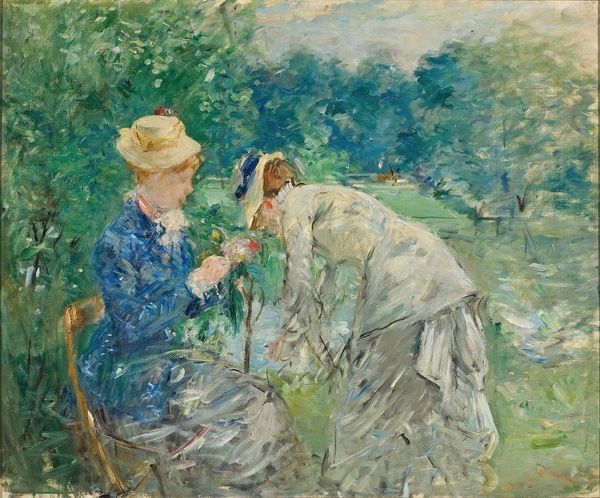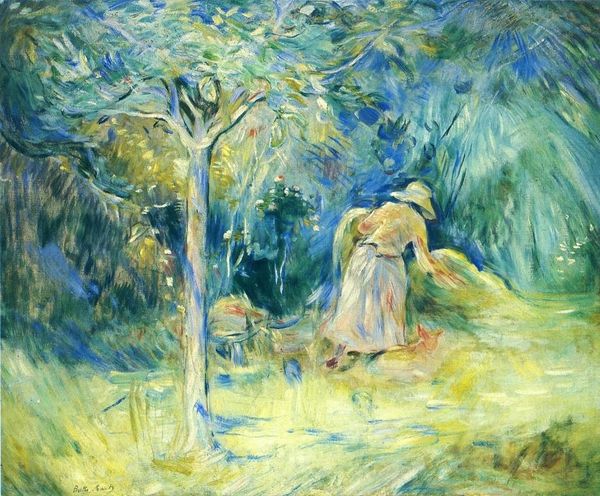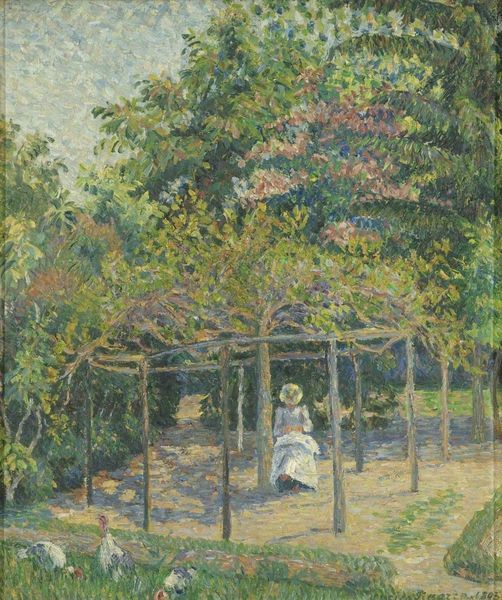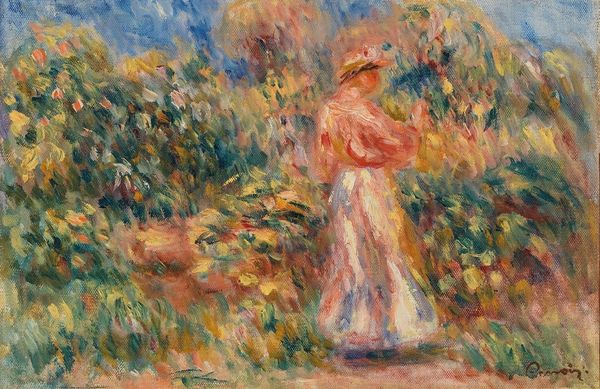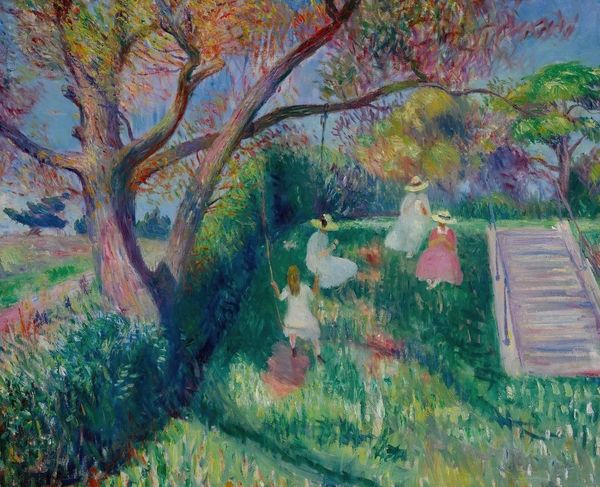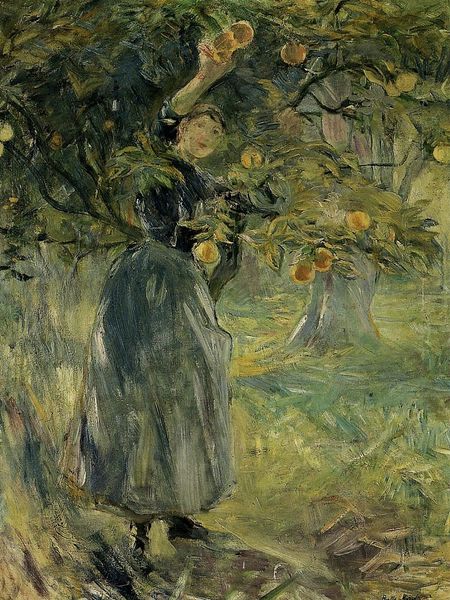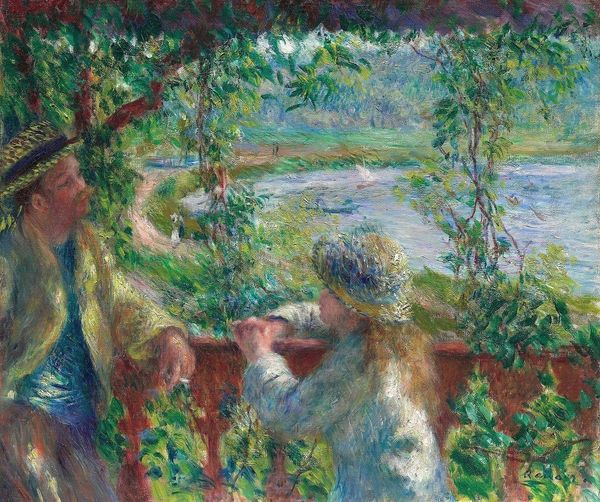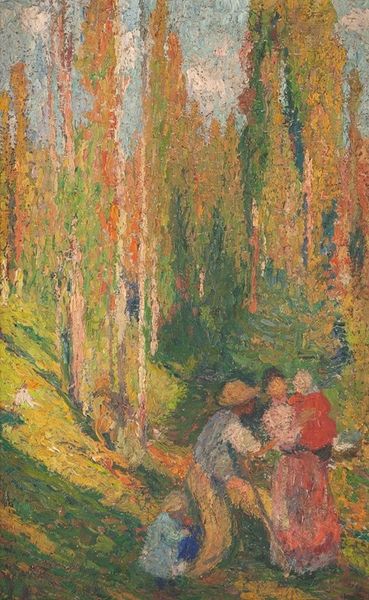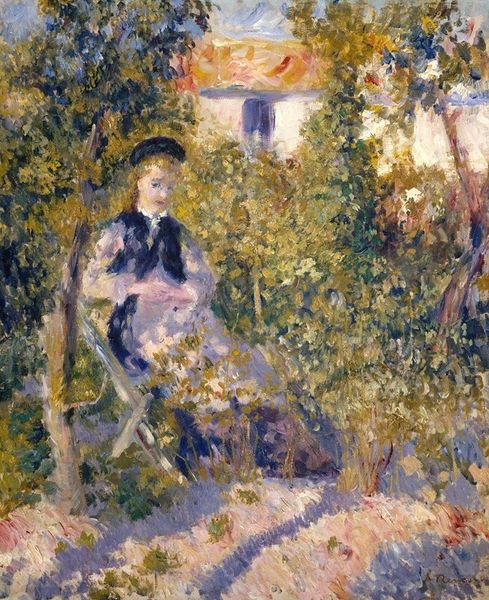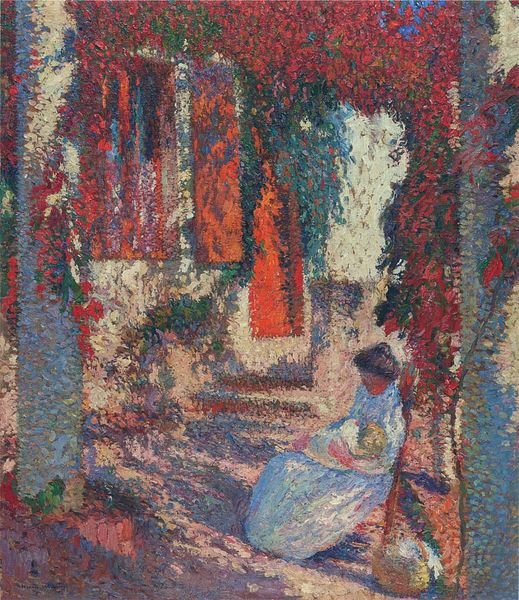
Copyright: Public Domain: Artvee
Curator: Here we see Armand Guillaumin’s “Madame Guillaumin,” likely completed around 1894. It’s an oil painting that beautifully exemplifies his engagement with impressionism and the depiction of everyday life. Editor: Wow, it’s like a summer afternoon frozen in time. I love how the light dapples through the leaves, painting those fleeting moments of light and shadow. It’s pure poetry. Curator: Indeed. Guillaumin’s work should be contextualized within the late 19th-century rise of impressionism as a challenge to academic painting, coinciding with evolving understandings of perception and the democratization of subject matter. By the late 19th century, it was revolutionary to prioritize a domestic scene such as this, over grand historical painting. Editor: Democratization, absolutely. She feels so grounded. You know, her dress shimmers with strokes of blues and pinks. It almost feels like a watercolor dreamscape, reflecting my own sense of longing to return to simple moments in nature. It begs the question: What's she reaching for? Curator: That's fascinating. Considering that this is a portrait of the artist's wife, perhaps it signals at a longing for connection, love and a re-centering in his domestic life as he developed as an artist. We need to think about the position of women in art historical movements, where we were often muses or symbols rather than recognized for our individual agency. Even a title, such as "Madame Guillaumin" reduces the individual to their spousal association. Editor: Exactly. You know, those kinds of stories give this work so much weight. You start seeing that figure differently, more as a vibrant presence within that space and less as an object. Now I'm seeing her expression, or feeling for it more like something unknowable that will unfold over a lifetime. Curator: It highlights the critical responsibility of considering intersectional identities to enrich our reading of historical narratives, and, more critically, what silences those stories maintain in canonical tellings of history. Editor: I think it’s pieces like this that remind me that the true magic of art lies in these connections, these unexpected sparks of understanding. Curator: I couldn't agree more; and I am always thinking about what questions remain for us to contend with.
Comments
No comments
Be the first to comment and join the conversation on the ultimate creative platform.
